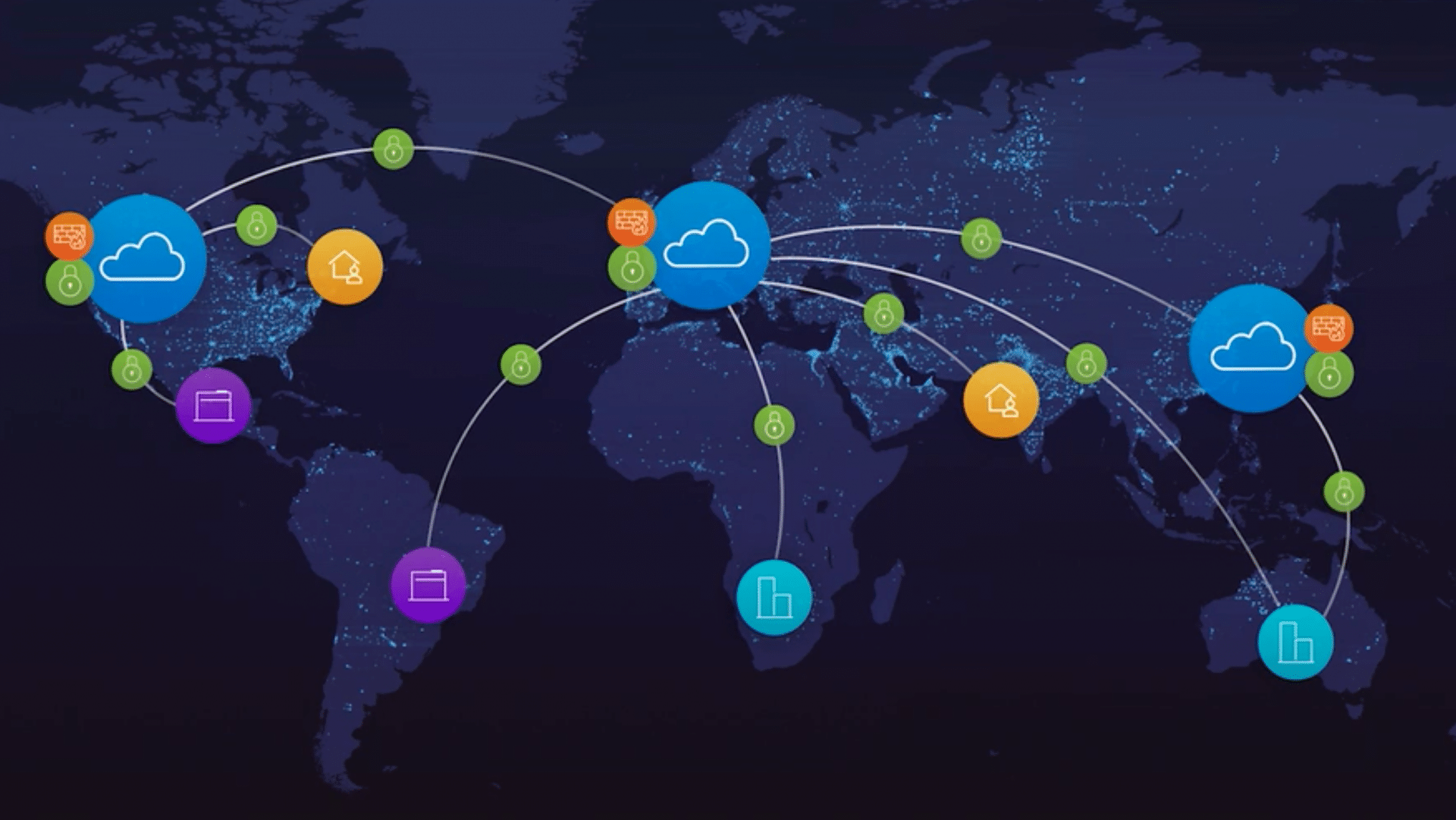This morning at VMworld 2020, VMware announced Virtual Cloud Network innovations that are all about creating a modern network to better support current as well as future business initiatives. VMware is going big and making advancements and enhancements across the board for networking and security. These advancements help organizations deal with the rapid shift to remote work, deliver traditional and modern applications faster and more securely, and should be able to reduce the cost and complexity of connecting and protecting the distributed enterprise.
This morning at VMworld 2020, VMware announced Virtual Cloud Network innovations that are all about creating a modern network to better support current as well as future business initiatives. VMware is going big and making advancements and enhancements across the board for networking and security. These advancements help organizations deal with the rapid shift to remote work, deliver traditional and modern applications faster and more securely, and should be able to reduce the cost and complexity of connecting and protecting the distributed enterprise.
For a long time, networks have worked really well. However, in recent years that began to change. First, the cloud migrated to multi-cloud, a move from all on-prem followed by a move to hybrid. Then remote work gained importance, with the last nine months or so really pushing it up to the forefront of issues that need addressing. The network of a couple of decades ago can no longer address these issues and needs to be changed.
VMware Virtual Cloud Network, as the name implies, is a virtual networking solution, the only complete Layer 2-7 network. It delivers and distributes all networking services in software over a diverse set of underlay transport including broadband, 4G/LTE, MPLS, dedicated internet access, and emerging 5G. The company currently has over 18,000 virtual cloud network customers including 91 of the Fortune 100. Today they are delivering the next wave.
The innovations announced today focus on three key areas: automation that enables the public cloud experience; modern application connectivity and security services; and solutions that reimagine what’s possible in network security.
- Network Automation that Delivers a Public Cloud Experience: VMware will add more cloud automation and scale, uptime and resiliency, ML-based predictive analytics, and intelligence to the virtual cloud network. VMware NSX-T 3.1 will support even larger-scale global deployments and disaster recovery use cases and automated deployment workflows. VMware will double the scale of NSX Federation, add new API-driven advanced routing and multicast capabilities, and offer Terraform Provider support. VMware vRealize Network Insight 6.0 will bring new assurance and verification capabilities as well as expanded VMware SD-WAN visibility. These updates will enable better planning for virtual and physical networks, improved network uptime and resiliency, faster troubleshooting, and proactive identification of potential network problems based on intent, and more effectiveness in achieving service level agreements. VMware Edge Network Intelligence is a new AIOps solution based on technology acquired from Nyansa. It will provide automated and actionable intelligence that helps assure users and IoT devices on campus, in branches, or in the home get the network performance they need to support applications.
- Connecting and Protecting Modern Apps: Organizations looking to improve productivity, agility, and customer experience are embracing a container-based, micro-services architecture and standardizing on Kubernetes for container management. The connectivity and security needed to address microservices requirements while at the same time connecting Kubernetes clusters to the infrastructure introduce the need for a rich multilayer networking stack. VMware is extending the Virtual Cloud Network to connect and protect these environments through VMware Tanzu Service Mesh powered by NSX and support for Project Antrea, an open-source that enables Kubernetes networking and security wherever Kubernetes runs including on-premise vSphere, public clouds as well as edge. Tanzu Service Mesh includes new capabilities focused on improving application continuity, resiliency, and security. The new VMware Container Networking with Antrea is a commercial offering consisting of signed images and binaries and full support for Project Antrea. VMware Container Networking with Antrea will be included in VMware NSX-T, vSphere 7 with Tanzu, and Tanzu Kubernetes Grid. Applications running on Kubernetes clusters using Antrea as the Container Networking Interface (CNI) can be discovered, connected, and protected by Tanzu Service Mesh.
- Re-imagining Network Security: VMware will deliver unmatched levels of firewall performance and programmable intelligence to the Virtual Cloud Network by enabling VMware NSX to run on leading SmartNICs. This includes advanced security for bare metal and highly sensitive workloads such as databases that are hard to protect today. Additionally, it enables “air gapping” of infrastructure, separating applications and hypervisors from the security controls on the SmartNIC. VMware is also announcing VMware NSX Advanced Threat Prevention, which combines NSX Distributed IDS/IPS with advanced malware detection (sandboxing) and AI-powered network traffic analysis (NTA) acquired from Lastline, Inc. These NTA capabilities use unsupervised and supervised ML machine learning models to accurately identify threats and minimize false positives compared to other network traffic analysis tools. The solution delivers an industry-first ability to apply virtual patches at every workload, something traditionally only implemented at the perimeter, enabling a more effective response to sophisticated threats before they disrupt business.
Availability
VMware Tanzu Service Mesh and VMware Container Networking with Antrea are available. VMware NSX-T 3.1, vRealize Network Insight 6.0, VMware Edge Network Intelligence, and VMware NSX Advanced Threat Prevention are expected to be available in VMware’s Q3 FY21 which ends on October 30, 2020.
Engage with StorageReview
Newsletter | YouTube | Podcast iTunes/Spotify | Instagram | Twitter | Facebook | RSS Feed

